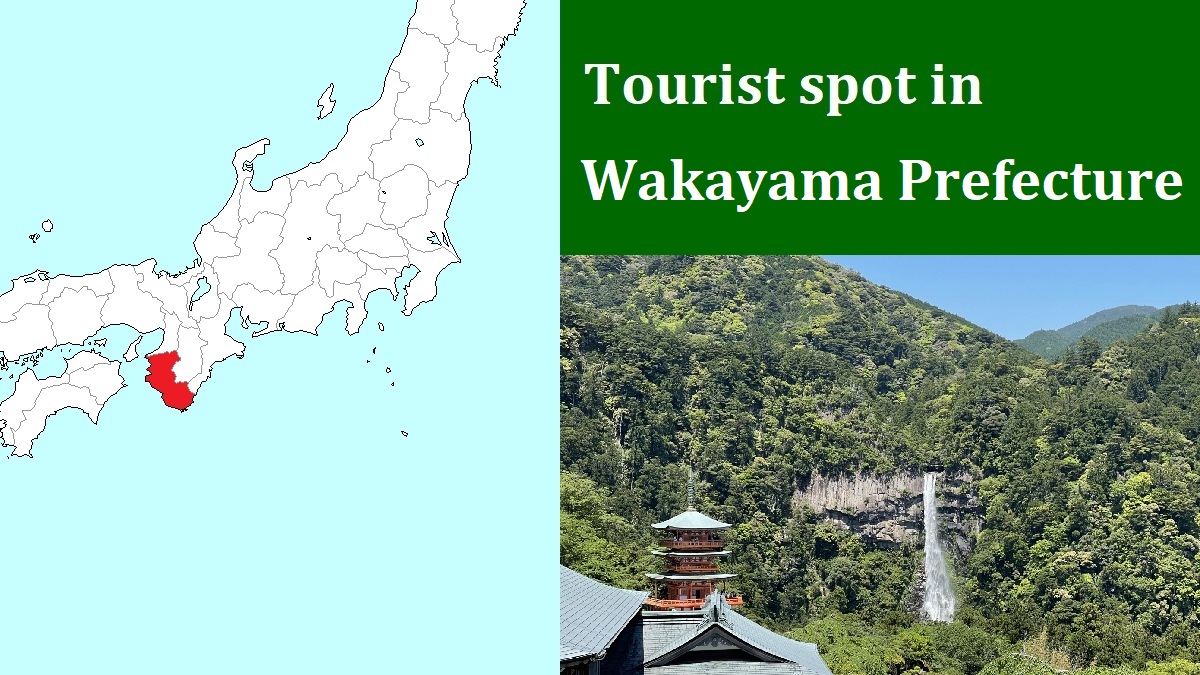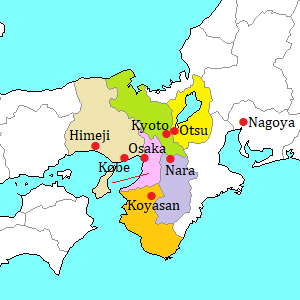Kumano Nachi Taisha shrine [熊野那智大社]
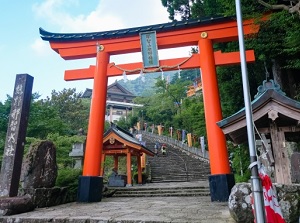
Torii gate of Kumano Nachi Taisha
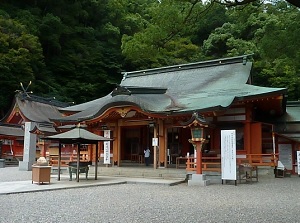
Main shrine of Kumano Nachi Taisha
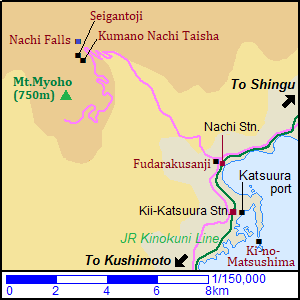
Kumano Nachi Taisha is a Shinto Shrine, and is one of the Three Grand Shrines of Kumano ("Kumano Sanzan" in Japanese).
It is a part of "Sacred Sites and Pilgrimage Routes in the Kii Mountain Range" designated as a UNESCO World Heritage Site.
It is on the mountainside located about 9 km northwest of the center of Katsuura town.
It is said that it was founded in 317 in legend.
It is sure that it had existed in the 8th century.
The first shrine was built after the construction of the other two shrines of Kumano Sanzan (Kumano Hongu Taisha, Kumano Hayatama Taisha).
The precinct is at the level of about 500 meters, and there are six shrines.
Old Kumano faith had accepted both the gods of Shinto and Jodo-shu (Pure Land Buddhism), so there are many Buddha statues in the Shinto shrines.
Nachi Falls (那智滝)
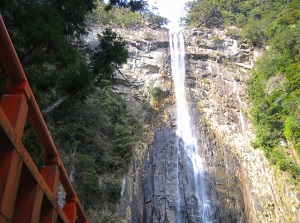
Nachi Falls
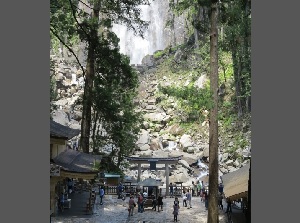
Hirou Shrine
Nachi Falls is one of the famous waterfalls in Japan, and is located about 1 km north of Kumano Nachi Taisha.
It is in Nachi River, and the height is 133 meters and the width is about 13 meters.
This waterfall has been an object of worship in Kumano area.
So, Kumano Nachi Taisha was built near this waterfall, but it had been moved to the current place later.
There is Hirou Shrine (飛瀧神社) at the foot of the waterfall.
Hirou Shrine has no hall for worship.
We worship the waterfall directly.
Seigantoji temple (青岸渡寺)
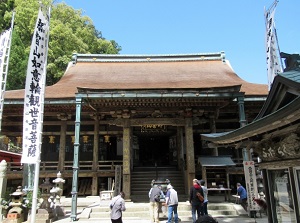
Seigantoji
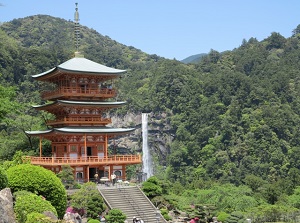
Three-story pagoda and Nachi Falls
Seigantoji is a Buddhist temple in the same site of Kumano Nachi Taisha.
It is said that this temple was founded in the 4th century by Ragyo-Shonin, a priest who had drifted from India.
The foundation was prior to the introduction of Buddhism from China in the 6th century.
There are several buildings, and the main hall was rebuilt in 1590.
The beautiful three-story pagoda was rebuilt in 1972, and it is very popular to take a picture of the scenery with both the pagoda and Nachi Falls.
Fudarakusanji temple (補陀洛山寺)
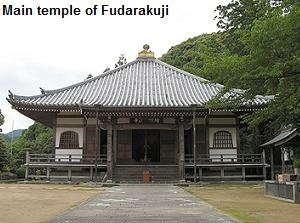
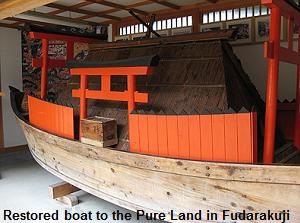
Fudarakusanji is also a Buddhist temple founded by Ragyo-Shonin.
It is located just west of JR Nachi station, and is near the beginning of the climbing road to Kumano Nachi Taisha.
The name of "Fudaraku" came from a word meaning "Pure Land" in Classical Sanskrit.
In the ancient times, it had been believed that there was the Pure Land beyond the ocean.
So, a believer or a priest to hope to go to the Pure Land was sent toward the ocean by boat from the shore near this temple, as a ceremony.
The room of the traveler on the boat was closed, and the boat had no power to move.
Literally, the traveler had gone to the Pure Land in the ocean.
The ceremony had been performed in this temple 20 times between 868 and 1722.
But no one knew what became of the travelers.
In the temple, the restored boat to the Pure Land is displayed.
How to get here
By route bus, from Kii-Katsuura station, 8 minutes to Nachi-eki stop (Fudarakusanji), 24 minutes to Nachi-no-taki-mae stop (Nachi Falls), 25 minutes to Nachisan stop (Kumano Nachi Taisha, Seigantoji).
Kumano Gobo Nankai Bus company operates the main bus routes in this area.
It is available to travel around Kumano Sanzan.

